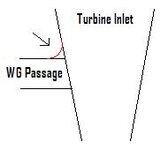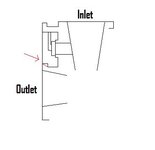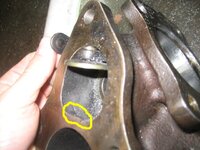Fox1486
15+ Year Contributor
- 131
- 4
- Jul 10, 2004
-
Rochester,
New_York
I picked up a EvoIII 16g and am going to run the stock boost for now. Hence I found it needs to be ported out. I've been reading Chadillac2000's writeup on "How to solve boost creep by porting" and the entire discussion with him and Oldman on another thread. Anyways I went out and bought a carbide burr, and have been porting for about 4 hours or so. I just finished, so I think, and started to smooth some stuff out with a stone bit.
Now it's time for everyone's favorite game........RATE MY PORTING!
Before porting:
After porting:
Now I still have to port out the area above the flapper arm to achieve the 90 degree opening, but I'm not as worried about that. I'm more concerned about porting TOO MUCH on the inlet and wastegate inlet and making the housing too thin. Anyone grade this for me/tips? Thanks
-Fox
Now it's time for everyone's favorite game........RATE MY PORTING!
Before porting:
You must be logged in to view this image or video.
You must be logged in to view this image or video.
After porting:
You must be logged in to view this image or video.
You must be logged in to view this image or video.
You must be logged in to view this image or video.
Now I still have to port out the area above the flapper arm to achieve the 90 degree opening, but I'm not as worried about that. I'm more concerned about porting TOO MUCH on the inlet and wastegate inlet and making the housing too thin. Anyone grade this for me/tips? Thanks
-Fox




 Pictures always make the surface look rough, but in reality it's not. Just try to get the scoring smooth so that you can't catch it with your finger nail. A 'liquid metal' port job is not required, ya know?
Pictures always make the surface look rough, but in reality it's not. Just try to get the scoring smooth so that you can't catch it with your finger nail. A 'liquid metal' port job is not required, ya know? s creepin. How large is your turbo to exhaust manifold outlet? How large is your turbo to exhaust manifold gasket? Making everything the same size would be ideal. Maybe just a bit smoother with the anding crosses.
s creepin. How large is your turbo to exhaust manifold outlet? How large is your turbo to exhaust manifold gasket? Making everything the same size would be ideal. Maybe just a bit smoother with the anding crosses. That's why it's very difficult to get that step out
That's why it's very difficult to get that step out

















